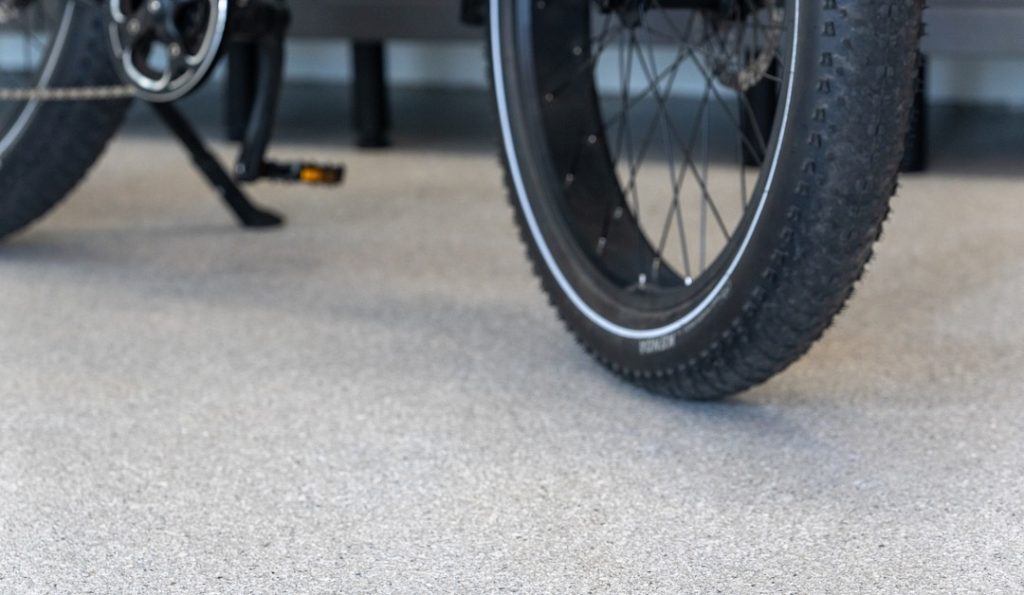
Professional Surface Preparation Ensures a Long-Lasting Concrete
When it comes to concrete coatings, there’s one step that matters just as much—if not more—than the coating itself: concrete surface preparation.
It might not be flashy, but skipping or rushing this critical step is the number one reason coatings fail. Whether you’re coating a garage, patio, basement, or commercial floor, proper preparation lays the groundwork for a strong, durable, and long-lasting finish.
At Peak Concrete Coatings, we know that investing time into surface prep is what separates a high-performance polyurea coating from one that peels, bubbles, or delaminates within a few seasons. In this blog, we’ll break down why concrete surface preparation is so important—and what professional prep actually involves.
Why Surface Prep Is So Critical
Concrete is tough, but it’s also porous and unpredictable. Over time, it accumulates:
- Dirt and grime
- Oil, grease, or tire residue
- Old sealers or coatings
- Moisture deep within the slab
- Surface damage like cracks or pitting
If these issues aren’t addressed before coating, you’re essentially sealing them in—leading to poor adhesion, bubbling, cracking, and early failure.
In fact, Concrete Network notes that improper surface preparation is the top reason why coatings don’t perform as expected.
Professional prep ensures the surface is clean, sound, and ready to bond with the new coating—resulting in better durability, appearance, and long-term value.
The Professional Surface Prep Process
At Peak Concrete Coatings, our prep process is designed to address every variable that can affect the final result. Here’s what that looks like:
1. Moisture Testing
Before anything is applied, we test the concrete for hidden moisture. In Kansas, moisture migration from the ground can be a major issue—especially in garages and basements. If overlooked, trapped moisture can cause bubbles, blisters, or coating separation over time.
Learn more about how we protect coatings from moisture damage.
2. Surface Cleaning
We remove oils, stains, and residues from the surface using industrial-grade cleaners. This ensures nothing interferes with the bond between the coating and the concrete.
3. Diamond Grinding
This is where the real magic happens. We mechanically grind the surface using diamond tooling, opening the pores of the concrete and creating a rough texture that allows the coating to bond at the molecular level.
This step also removes old coatings, sealers, and surface contaminants that prevent adhesion. According to the American Concrete Institute, mechanical surface prep is essential for coating systems that require long-term performance.
4. Crack and Pit Repair
Next, we patch any cracks, chips, or pits using high-strength repair compounds. This step smooths out the surface and prevents future damage from spreading beneath the coating.
For Kansas homeowners dealing with freeze-thaw cycles, this is especially important. A well-prepped surface resists movement and shifting caused by weather changes.
See how our prep process stops cracks before they spread.
5. Dust and Debris Removal
Finally, we remove all dust and debris using industrial vacuums with HEPA filters. This leaves a completely clean, dry surface ready for coating—no shortcuts, no guesswork.
What Happens If You Skip Surface Prep?
Without professional concrete surface preparation, coatings are set up to fail. Common issues include:
- Peeling or flaking within months
- Blistering due to trapped moisture
- Uneven or inconsistent finish
- Reduced lifespan and more frequent repairs
- Wasted time and money on reapplications
DIY kits often skip critical prep steps or rely on acid etching—a method that doesn’t offer consistent results or deep surface profiling. For lasting results, grinding and proper repair are a must.
Read more about the risks of DIY concrete coating methods.
Why It Matters in Kansas
Concrete in Kansas deals with unique challenges:
- Freeze-thaw expansion in winter
- Intense UV exposure in summer
- Moisture intrusion during storms and humid months
Skipping prep in this environment shortens the life of even the best coating. That’s why we tailor every job to Kansas conditions—making sure the surface is ready to perform, no matter the season.
A Better Bond = A Longer-Lasting Finish
Professional prep creates a mechanical bond between the concrete and the polyurea coating. When done right, this bond:
- Prevents peeling or bubbling
- Extends the coating’s life to 15–20+ years
- Improves the look and feel of the surface
- Reduces maintenance needs over time
In short, it’s the foundation of a coating that’s built to last. See the difference in our project gallery.
Invest in Prep, Reap Long-Term Results
You can choose the best coating on the market—but without solid prep, it won’t last. By prioritizing concrete surface preparation, you’re protecting your investment, improving performance, and ensuring your coating looks as good in 10 years as it does on day one.
If you’re ready for a surface that truly lasts, let’s start with a foundation that sets it up for success.
Schedule a free consultation with Peak Concrete Coatings today.
